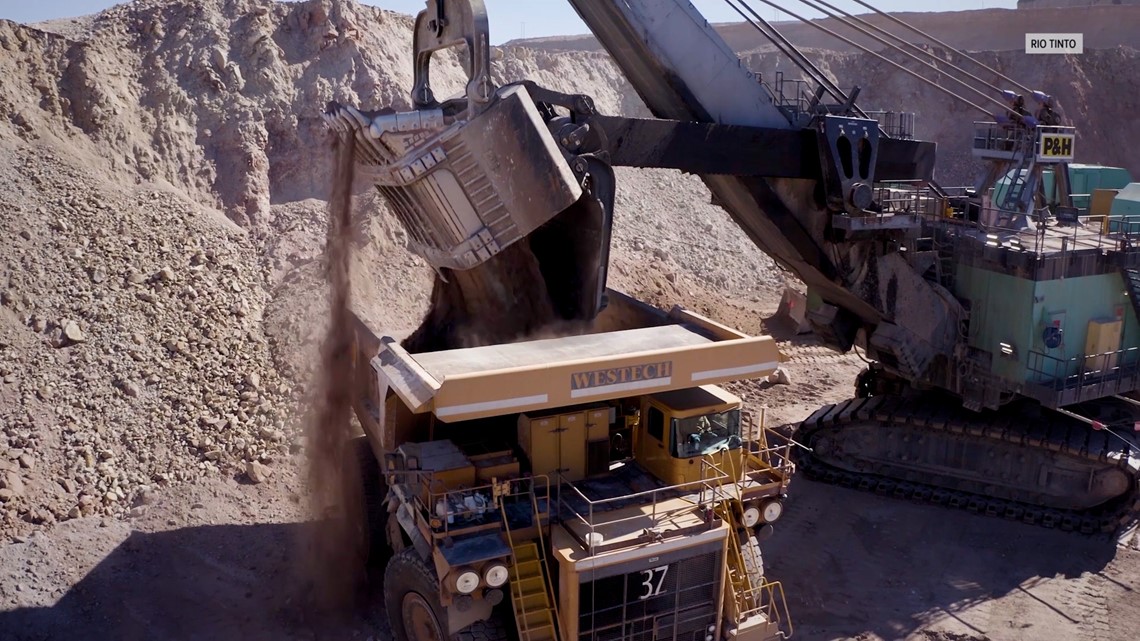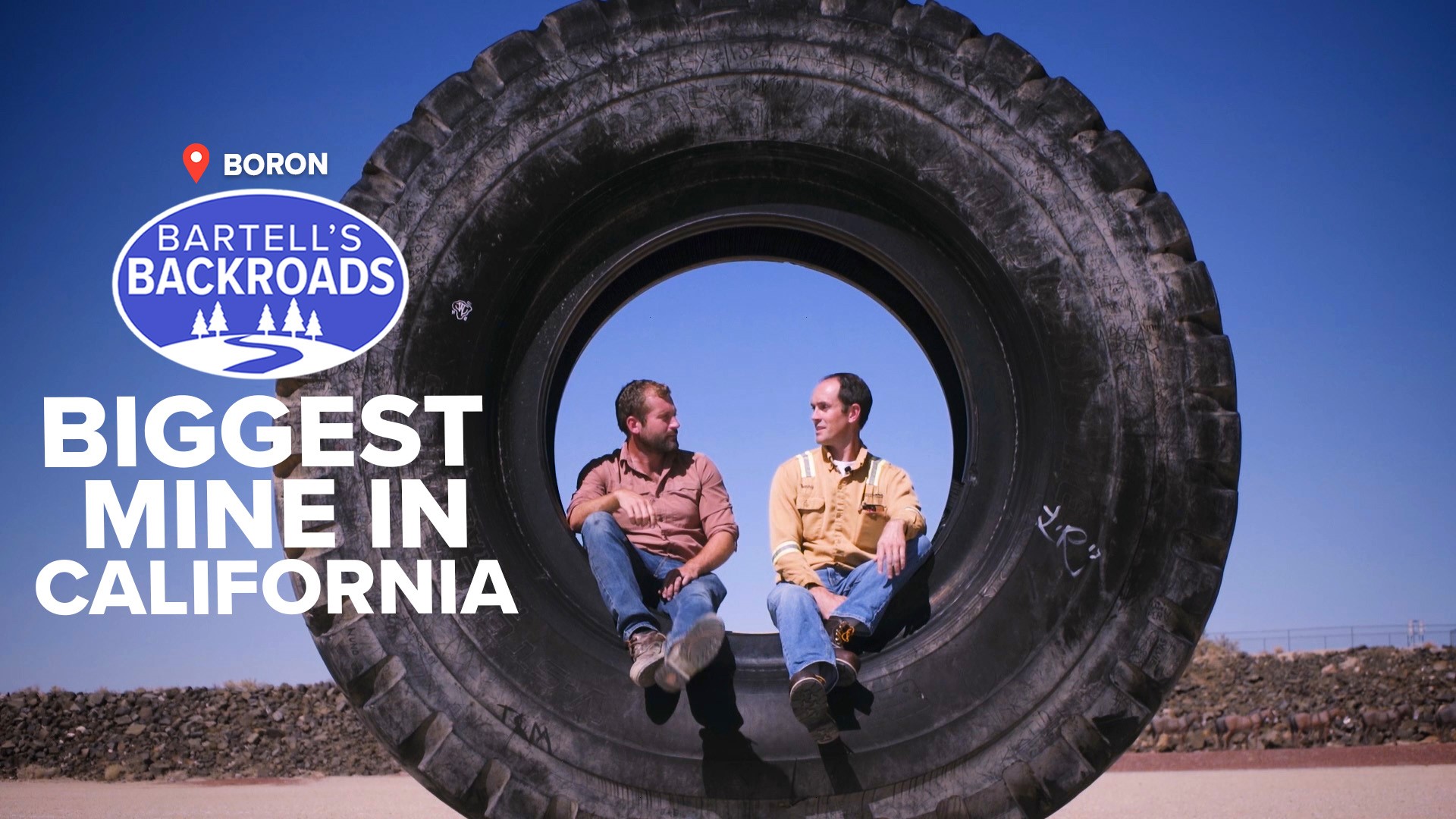BORON, Calif. — Borax: the cleaning agent our parents and grandparents grew up with. The old-fashioned powdered soap cleaned clothes, cleaned hands and cleaned dishes. It's also a naturally occurring mineral.
Borax may be old-fashioned, but it’s not outdated. In fact, borax is found in modern items people around the world use every day like fertilizer, fire retardant, and cell phone screens.
There are really only two places in the world that produce it: Turkey and at the U.S. Borax mine near the Mojave Desert in the town of Boron, California.
U.S Borax is owned by Rio Tinto and it’s the largest mining operation in California. General Manager Renny Dillinger says they supply about 30% of the world’s borates.
“Borax is an element on the periodic table, it's Boron and it's combined with other elements to be Borax like you see it here in the mining pit,” says Dillinger.
Without actually visiting the pit, it's hard to fathom how big it is and how much borax is being removed. Luckily for the general public, the U.S. Borax mine has a fantastic visitors center. There, you can get an up-close look at the mining process and the equipment, like the massive truck parked outside.
“This truck is 25 feet tall, 22-feet wide, and carries about 270,000 tons every time it goes to the surface,” Dillinger says.


Borax is normally sold in a powder form but to get that powder, massive dump trucks must move borax boulders from the mine to the processing plant to be crushed and purified. Dillinger says It’s not uncommon for these monsters to be running 24-hours a day and burn about 1,000 gallons of fuel in one shift.
“All our mining these days is pretty much done all by heavy equipment,” Dillinger says.
Before the massive dump trucks and pit mining, borax mining was a primitive process that involved mules and a wagon. After visitors learn about modern mining at U.S. Borax visitors center, they are encouraged to visit the 20 Mule Team Museum in Boron. Here, Jerry Gallegos and his team of volunteers tell visitors about the long history of borax mining.
“It all started in Death Valley, where they found borax,” Gallegos says.
TAKE A TRIP ON BARTELL'S BACKROADS:
► See an interactive map of everywhere John has visited on the backroads
► Watch all of the Backroads videos
► Follow John on Facebook
In the early 1880s, borax was mined in Death Valley with teams of mules and wagons. When fully loaded, a 20 mule team could pull two wagons and water tank with a combined weight of 36.5 tons.
“In the desert, it could get up to 130 degrees,” Gallegos says.
The 20-mule team hauled borax 165 miles through Death Valley. Their strength and tenacity were highly revered. Their image ultimately became the logo on every box of 20 Mule Team Borax soap.
“It’s on the Borax bleach, the hand cleaner...that’s what we’ve always been known for,” says Gallegos.
Innovators are constantly finding new applications for Borax. Recently, trace amounts of lithium were discovered in the waste materials of the mining process. New refining processes are in the works to pull out the lithium deposits, and someday soon that lithium could be used inside electric car batteries, only adding to the usefulness of the mine.
Weather permitting, the Visitor Center is open Tuesdays through Saturdays from 9 a.m. to 5 p.m., excluding major holidays.
Admission is free, but the Center accepts donations to support local community organizations through their nonprofit Borax Visitor Center Foundation. Parking is also free and accessible to recreational vehicles.
HIT THE BACKROADS: Summer is here! Plan your ultimate road trip with John Bartell's list of California's top 10 destinations to visit.



















